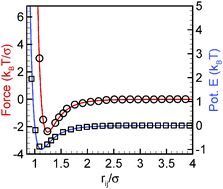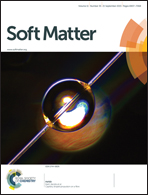Interaction potentials from arbitrary multi-particle trajectory data†
Abstract
Understanding the complex physics of particle-based systems at the nanoscale and mesoscale increasingly relies on simulation methods, empowered by exponential advances in computing speed. A major impediment to progress lies in reliably obtaining the interaction potential functions that control system behavior – which are key inputs for any simulation approach – and which are often difficult or impossible to obtain directly using traditional experimental methods. Here, we present a straightforward methodology for generating pair potential functions from large multi-particle trajectory datasets, with no operational constraints regarding their state of equilibration, degree of damping or presence of hydrodynamic interactions. Using simulated datasets, we demonstrate that the method is highly robust against trajectory perturbations from Brownian motion and common errors introduced by particle tracking algorithms. Given the recent rapid pace of advancement in high-speed and three-dimensional microscopy and associated particle tracking algorithms, we anticipate a near future experimental regime where easily collected high-dimensional trajectory sets can be rapidly converted to the detailed interaction and hydrodynamic force fields required to replicate the system's physics in simulation.


 Please wait while we load your content...
Please wait while we load your content...